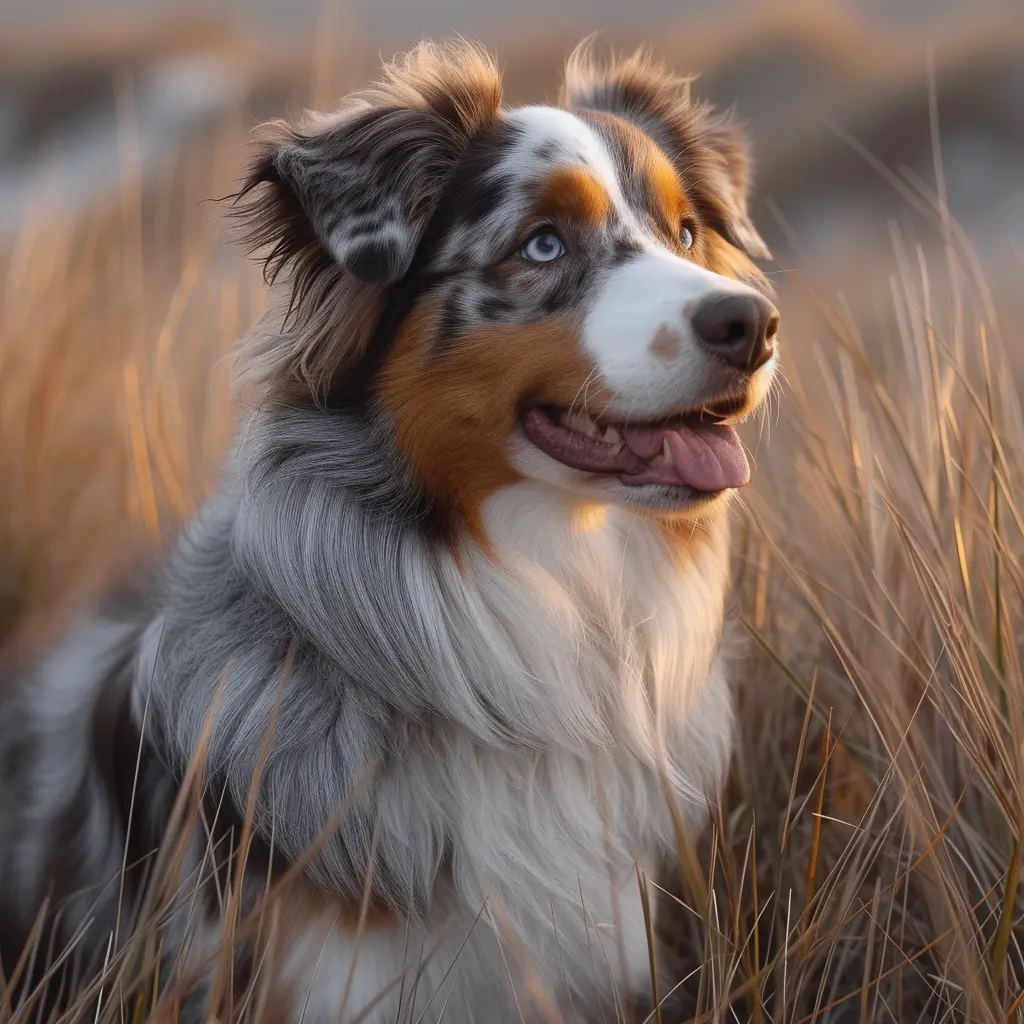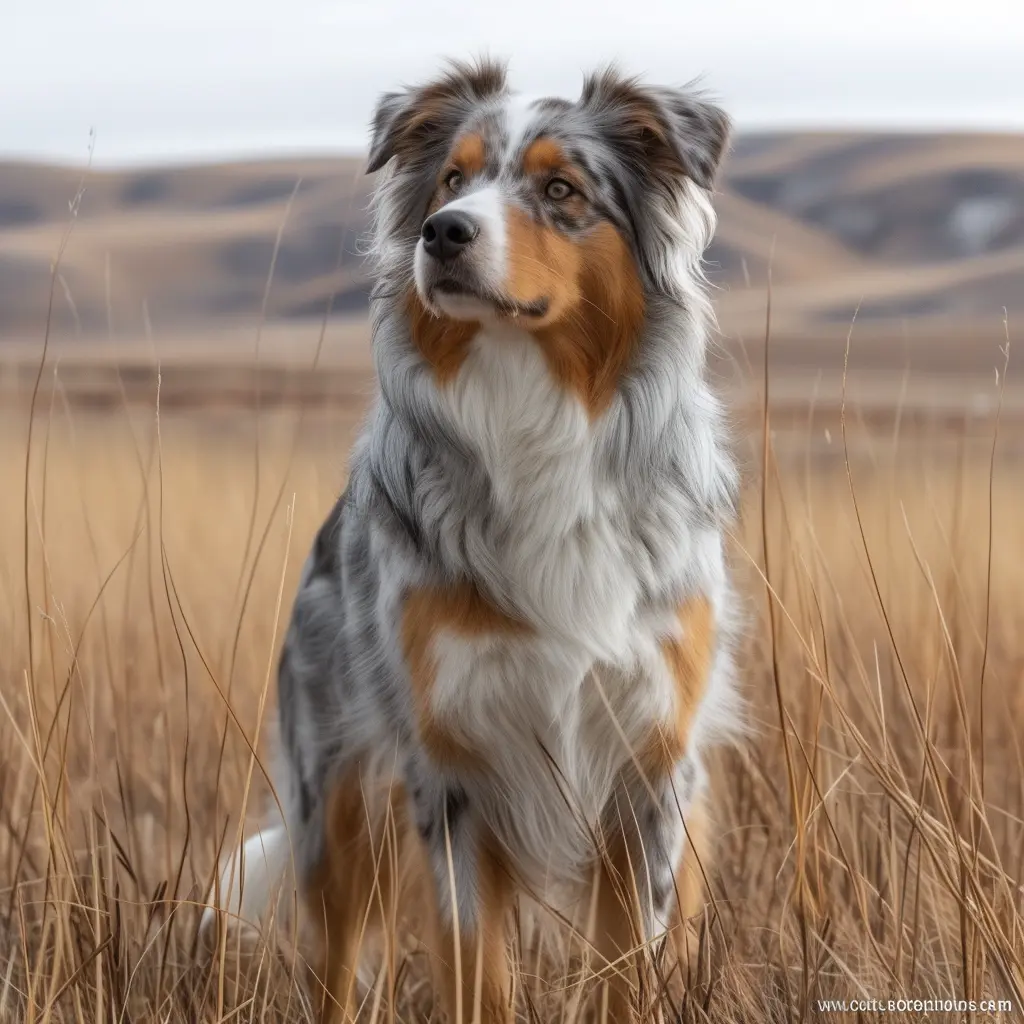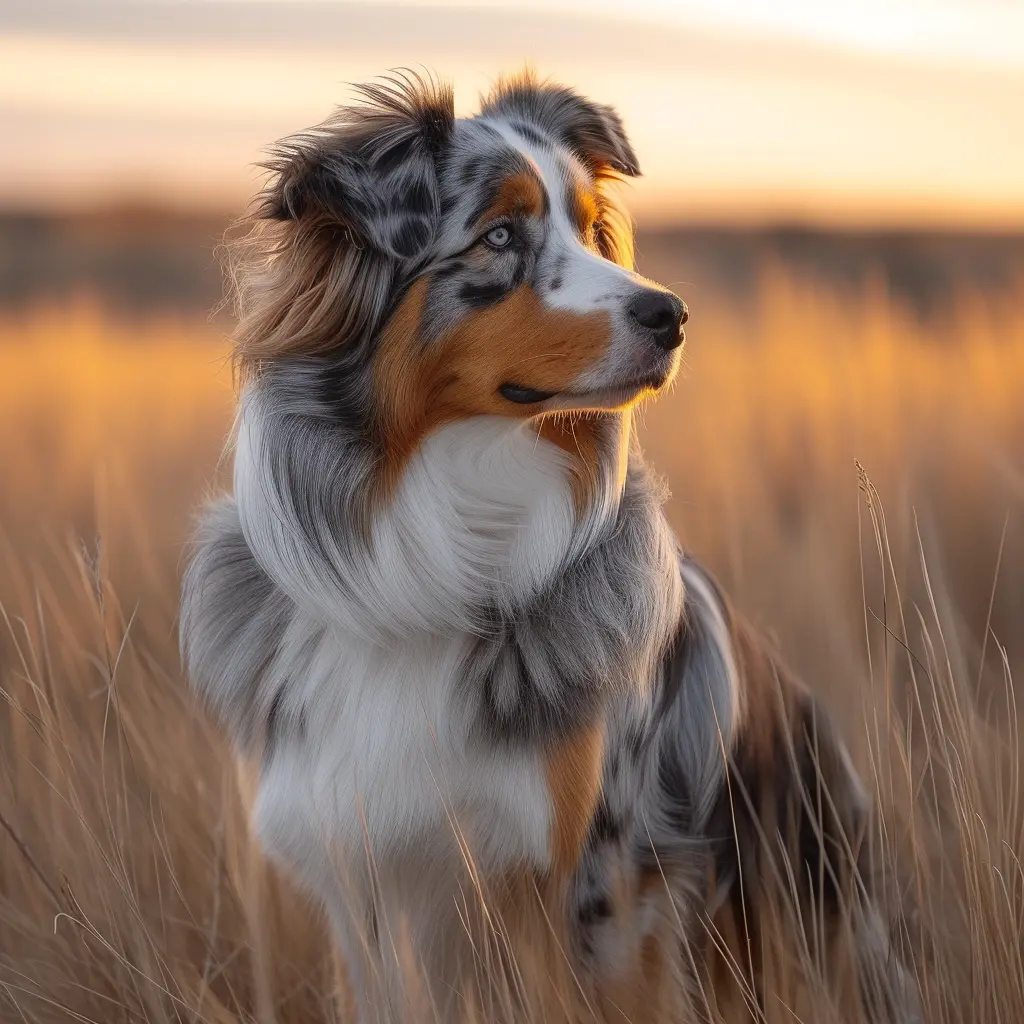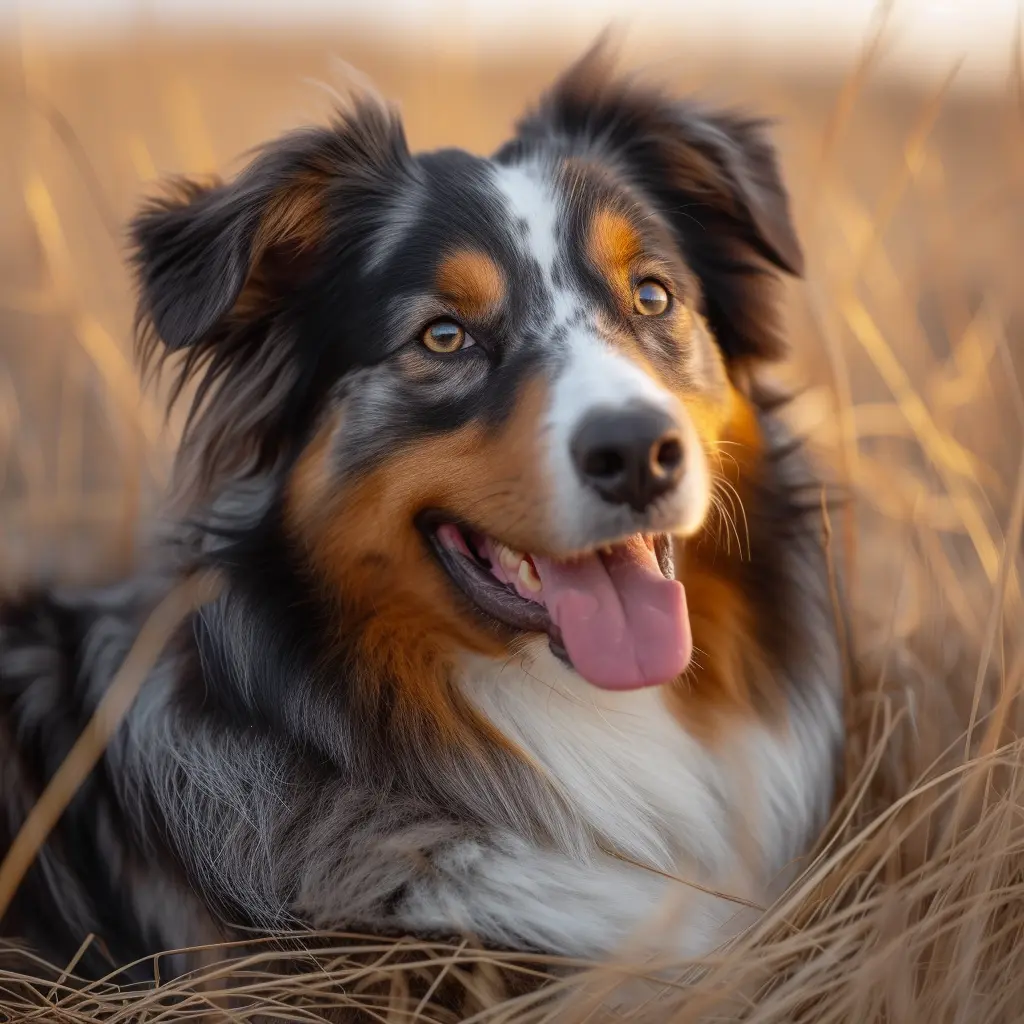Australian Shepherd: A lively and versatile herding dog
The Australian Shepherd, classified in FCI Group 1, Section 1, Standard No. 342, originates from the USA and impresses with its lively nature. The height at the withers is 51-58 cm for males and 46-53 cm for females. This breed is not only an excellent herding dog, but also a loyal family dog with a life expectancy of 14 years and more.
Problems and training: conscious handling required.
Biting incidents are a common problem with Australian Shepherds. Their strong protective instinct requires early training to prevent unwanted behavior. These intelligent working dogs need not only a lot of physical but also mental activity in order to be balanced.

Nature and character: Not for beginners.
With its pronounced self-confidence and ability to work independently as a herding dog, the Aussie is less suitable for beginners. Obedience and meaningful activity are essential for positive development.
Origin and history: A young breed from the USA.
The Australian Shepherd originally comes from the USA, but was only recognized by the FCI in 1996. The naming goes back to the history of immigration, in which various herding dogs were crossed with each other. The name “little blue dog” originated due to the light blue coloration.

Appearance and color variety: Unique appearance.
The Australian Shepherd impresses with its medium-sized, attractive build. Its coat is of medium length with a dense undercoat and comes in different color variations such as black, red, red-merle and blue-merle. The eyes can be blue, brown or amber.
Tail length and ears: Natural characteristics.
In the USA the tail is often docked, in Europe docking is prohibited. The eyes are almond-shaped, the triangular tipped ears slightly rounded.

**Conclusion: A versatile companion with special needs.
The Australian Shepherd is more than just a visually appealing dog. Its versatility can be seen in various areas of use, from working as a herding dog to use in public institutions. However, potential owners should be aware that this breed has special training and activity requirements – a true working dog that can be a loyal companion for many years with the right care.
New dog breed descriptions in a quick overview
